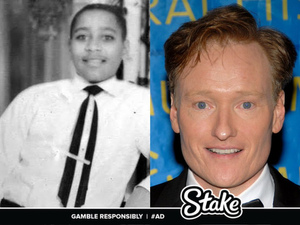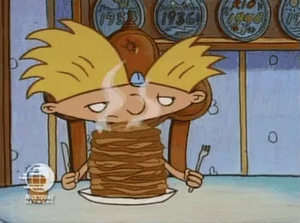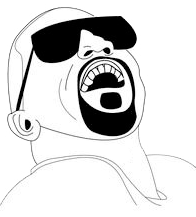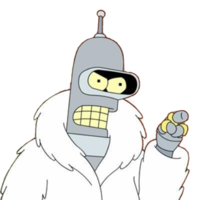The first thing that struck me when I moved to Brooklyn in 2002 was how many anglophiles there were everywhere. I’d been to New York a few times prior to actually making the city my home, and on those trips I’d often connected with blowhard music fans who wanted to chew my ear off about obscure North American punk singles they’d dredged up after countless hours of crate digging. But this time something was different. Posters for 24 Hour Party People were everywhere, a number of bands had started using samplers, and the early live shows and debut EP of the Yeah Yeah Yeahs indicated that pop was no longer a thing to be feared, dressing up could be fun, and meshing loud guitars with processed beats was something to be fully embraced.
Those sizable shifts might seem archaic to readers in the British Isles, where it had long been acceptable to file Pet Shop Boys and Black Flag singles back to back, and the idea of rock/indie bands embracing technology stretched back several decades or more. But the guitar-bass-drums format holds a vice-like grip over the psyche of the average North American indie kid. The idea of music-as-spectacle, of putting on a flamboyant show, of veering too far away from the basic tenets of punk rock, is difficult to swallow for anyone deeply ingrained in the underground music scene on this side of the Atlantic. When The Strokes broke globally in 2001, it seemed as though the guitar-bass-drums tradition would continue ad infinitum, but as eyes stretched further than Julian Casablancas and his band, and A&R men started showing up in unlikely makeshift loft and warehouse venues in Brooklyn, it was clear that changes were afoot.
I distinctly recall getting into a conversation with a guy about a rare single by former Factory Records signings Section 25 during my first few months in the country, and watching the disappointment well up in his eyes when I had to confess to him that I wasn’t familiar with the song to which he was referring. But this conversation made perfect sense considering the amount of Mancunian music of an ‘80s vintage that was cropping up whenever I stepped foot in a bar or club. When Interpol released Turn on the Bright Lights in August 2002, it was a perfect marrying of the Chameleons’ clipped guitar sound and Joy Division’s brittle melancholia. In other words, a near identical reflection of the musical fascinations that had gripped a vast swathe of the city at the time.
But just prior to the release of that Interpol album was further proof that this was going to be a decade where artists from an indie or rock background were fully prepared to embrace a wider spectrum of influences. James Murphy had dabbled in fusing post punk and electronic sounds during his time as an engineer for the experimental Rhode Island post-hardcore outfit Six Finger Satellite, but really tied up those strands and took them into a different sphere with ‘Losing My Edge’ under his LCD Soundsystem moniker in mid 2002. Somewhere along the line in the grunge inflected ‘90s, America had forgotten how to dance—and considering New York’s rich and multifarious history in this regard (Chic, Arthur Baker, Man Parrish, Madonna, Kid Creole, and countless others immediately spring to mind), it was clearly time for that balance to be redressed.
The wider floodgates opened around 2003/2004, with the angular Rundgren-esque art rock of the Fiery Furnaces gaining immediate international recognition, TV on the Radio releasing the landmark (and, for my money, still the most impressive release in their canon) Young Liars EP, and Animal Collective gaining considerable acclaim for coming out with a unique twist on the burgeoning freak folk movement with their Sung Tongs record. Those bands, and other likeminded spirits such as Gang Gang Dance, often moved in similar circles, playing numerous shows at Northsix in Williamsburg, squeezing into tiny practice spaces across the city, and tending bar at the notorious watering hole Daddy’s to scrape money together to fund these (and other) artistic pursuits.
What brought together disparate talents like LCD Soundsystem, TV on the Radio, Gang Gang Dance, and Animal Collective, as well as bands like Black Dice, whom Murphy briefly signed to his DFA label, was a desire to tinker with technology, to bring old a***ogue synths and primitive samplers into their setups and see what those machines could add to their pallets. The previous decade was marked by a gigantic step back from the technological brink, not just in New York but pretty much everywhere in North America, suggesting grunge had cast a huge backward looking shadow that was difficult to shake off. But many of the Brooklyn and Manhattan bands of the 2000s rediscovered the willful sense of experimentation embedded in the New York post punk scene of the ‘80s, where genre hopping was commonplace, a fearless sense of experimentation pervaded, and a desire to draw on the past for inspiration—but to never slip into pointless pastiche—was the order of the day.
Other New York artists who had formerly embraced advances in technology, like Liquid Liquid, ESG, and Arthur Russell, were the touchstones for this new set of artists, who often stuck closely to traditional song arrangements, but matched them with abstract noise and segments of found sounds and field recordings that they stored in their sample libraries. At a certain point you could barely enter a venue like Death by Audio in Brooklyn or the late and dearly lamented Tonic on the Lower East Side without seeing someone hunched, Panda Bear style, over a BOSS SP-202 or a Roland SP-404, or some kind of combination of the two, with FX pedals optional and a primitive on-stage mixing desk essential. It wasn’t necessarily “dance” music that was being made (although some of it was eminently danceable), but the influence of several decades of electronic artists was keenly felt and being brought out into the open by musicians who may have found it impossible to quash the urge to reach for their guitars had they emerged in earlier decades.
Again, this might not seem particularly revolutionary, particularly from a British standpoint. But consider the derision that is often heaped on electronic music in the U.S. in indie/underground circles, which had its genesis in the “Disco Sucks” campaigns of the late 1970s, and had largely kept guitar oriented sounds and club aligned jams completely separate for the best part of a decade or more prior to this outburst of creativity. Suddenly, it was okay for artists who were ostensibly defined as “indie” to start talking about records on Kompakt or Hyperdub, and Our Band Could Be Your Life-style notions that are deeply ingrained in the heart of the underground scene—where authenticity and integrity are key, dressing down is de rigueur, and the guitar remains king—were relaxed or discarded or played a secondary role. Naturally, the comments sections in blogs still got clogged up with curiously luddite perspectives (typically along the lines of: “I don’t want to pay x amount of dollars to see someone pushing a button on a machine”), but those views finally seemed out of step with the general groundswell of opinion.
Of course, there were precedents for this in the U.S. music scene, and the idea of an American indie band deploying a sampler as a key part in their musical arsenal wasn’t exactly new. Cop Shoot Cop were a notorious New York noise band who didn’t shy away from making sample based sounds. Mission of Burma enjoyed something of a revival in the past decade for their unique use of sound manipulation. Tortoise had spent a decent part of the ‘90s working sample based elements into their sound. But those artists were often the exception to the rule—lone guns working against type, who stood out precisely because their working methods bucked prevalent trends. In New York in the 2000s, and Brooklyn especially, we had a mass of artists all leaning hard on technology to get the job done, bringing new and unexplored textures to their sounds. It’s no surprise that M.I.A. and Santigold both found comfortable creative homes in Brooklyn during the 2000s, where they could iron out the kinks in their fusions of global dance music genres amid likeminded souls.
Even bands who weren’t discovering the delights inherent in technology were heading directly away from the darker mash up of hard d**** and Blue Cheer rock that proliferated throughout the ‘90s. There’s scarcely a more un-punk sound than Grizzly Bear’s genteel mix of choirboy harmonies and tear-stained guitar melodies. In 2006, I found myself working a desk job with someone whose mother went to the same church as Sufjan Stevens, which was such a fundamentally un-rock mode of operation that people took to it as a refreshing anti-rebellion standpoint. Perhaps decades of rock & roll hellraising had finally come full circle and spewed out the other side, wherein going to church was suddenly defined as the new howling at the gates of dawn. Even Dirty Projectors gained a significant boost by choosing to tool with the legacy of one of punk’s Trojan horses, Black Flag’s Damaged, and taking it as far away from its origins as humanly possible.
But while punk may have cast only a cursory influence over the heavy hitters in the New York music scene of the past decade, there were certain fundamental tenets of its set up that remained steadfast. The American underground is too deeply entrenched in punk, too enamoured by its machinations, to ever fully let go. Many of those bands copped a break by playing in the numerous DIY venues that continued to thrive in the city, with Todd P or one of his acolytes providing improvised spaces for them to initially pedal their wares. As that underground scene solidified and spread, so the tendency to act antithetically rose, to work against names that were now edging toward the Billboard chart, to naturally reject what had come before, just as it had in every concurrent music scene since time immemorial.
Thus, by the end of the decade, resolutely guitar based bands were once again in fashion, with the scratchy pop ‘n’ post punk notions of Vivian Girls and Crystal Stilts in the ascendancy, again taking their cues from a unique brand of anglophilia, which this time festishized the spurious “shambling” movement of the 1980s. Suddenly, records by bands like the Shop Assistants, Talulah Gosh, Bogshed, and the Weather Prophets were changing hands for silly money, and people were decked out in outsized NHS specs and high waisted jeans with their shirts firmly tucked in. It was a backwards step for sure, a turning point against the aggressive futurism of Black Dice, Gang Gang Dance, et al, but not one without its high points. Crystal Stilts’ Alight of Night remains one of the best straightforward rock albums to be released from Brooklyn in the past 10 years.
It’s difficult to see the city holding as much sway in this decade as it did in the last—for one thing, it’s too expensive to live here, causing an aggressively localized scene to develop, which is mostly populated by people with day jobs playing for fun and with little time for expanding their audience beyond the boundaries of the five boroughs. For another, New York is an inherently transient city, and many of the artists listed above (and some others not mentioned: ie. Liars, High Places) have already moved on to other pastures. And besides, the gathering storm that beckoned during the backend of Animal Collective’s promo stint for Merriweather Post Pavilion, and the frosty reception for Noah Lennox at this year’s Pitchfork Festival, suggests that a backlash is already very much underway. See you in 2025 for the inevitable revival.
drownedinsound.com/in_depth/4141040-a-reflection-on-the-new-york-music-scene-2000-2009
Honestly, this is a great write up. I'll check it out later but thank you for posting this.
finna take a shower but i can’t wait to read this.
singlehandedly carrying music sxn this weekend
 ye bully mode
ye bully modefinna take a shower but i can’t wait to read this.
singlehandedly carrying music sxn this weekend
It really was a beautiful time to be here and experience it even if I wasn't outside like that til 08-09. Made me the music nerd I am today

 Timbs0
Timbs0It really was a beautiful time to be here and experience it even if I wasn't outside like that til 08-09. Made me the music nerd I am today

damn i’m old lol
i was outside like 2001
 hot pancakes
hot pancakesdamn i’m old lol
i was outside like 2001
Aye man I get it, thecoli is dry asl







